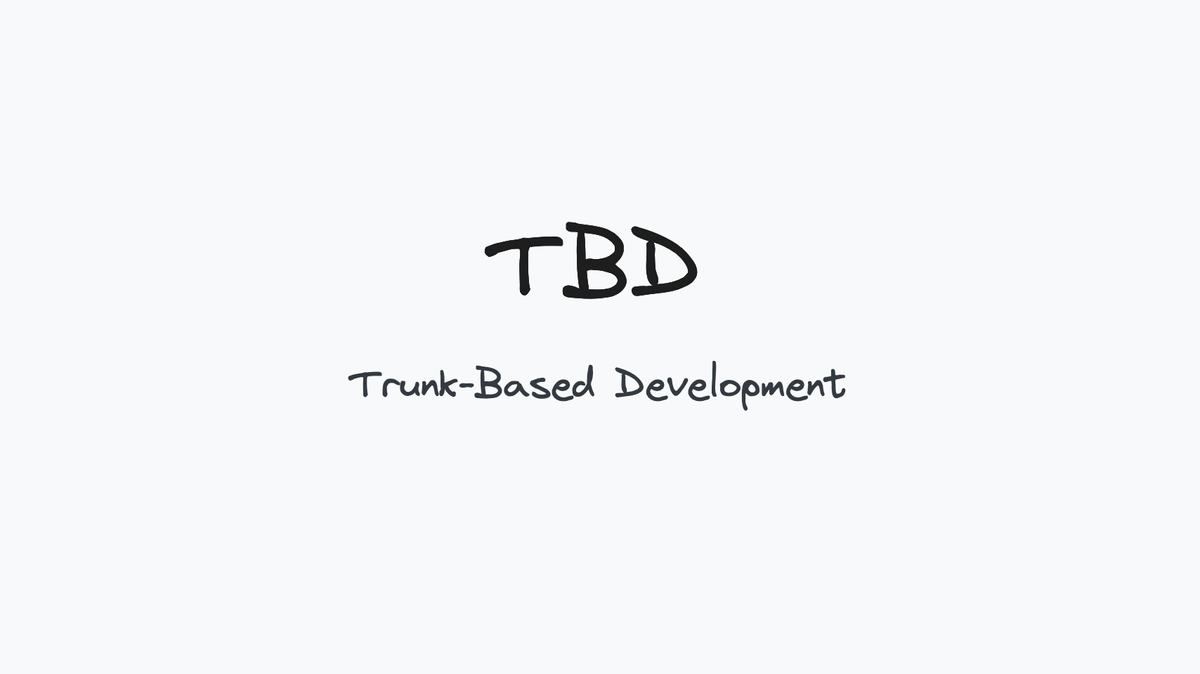Trunk-Based Development: Introduction, Benefits, and Implementation Challenges

Trunk-Based Development (TBD) is a repository management approach that is becoming increasingly popular due to its simplicity and effectiveness. TBD focuses on using a single main branch — the Trunk — while avoiding long-lived branches, allowing for better control over code, fewer merge conflicts, and a faster deployment process. However, despite its clear advantages, this approach requires a mature infrastructure, team discipline, and well-established processes. In this article, we’ll explore TBD's key principles, benefits, and questions arising during its implementation.
Core Principles of Trunk-Based Development

TBD is based on several key principles:
- Single Branch (Trunk): The repository has one main branch, which must always be ready for release. This means that every commit to this branch should be stable and production-ready.
- Short-Lived Branches: Any branches created to work on specific tasks should live for one or two days. Once the task is complete, the branch merges back into the main branch.
- Always Ready for Release: The main branch must always be deployable. This is achieved through automated testing and continuous integration (CI).
- Feature Flags: New functionality can be added to the main codebase using feature flags, which allow teams to manage its visibility and perform testing before the official release.
Feature Flags and Functionality Management

Feature flags play a crucial role in TBD, allowing teams to gradually introduce new features, test them with specific users, and disable them as needed. It’s important to note that not every small change requires a feature flag. This tool should be reserved for larger features that require extended testing or staged rollouts. Small changes can be made without feature flags if they don’t affect the system’s stability.
Mature Infrastructure: The Foundation of Successful TBD

One of the key requirements for successful TBD adoption is a mature development infrastructure. This includes effective tools for code management, CI/CD, and a testing system. Without a well-established automated testing and deployment system, it becomes difficult to maintain a constantly release-ready main branch.
Testing: The Key to Code Quality

Testing is central to TBD. To maintain code stability, three levels of testing are typically used: unit tests, integration tests, and end-to-end tests. The latter simulates real user actions to verify how the system behaves in real-world conditions. However, as discussed in the presentation, end-to-end tests shouldn’t always block deployment, as they can be unstable due to their reliance on multiple systems.
Benefits of TBD
- Fewer Merge Conflicts: Short-lived branches reduce the likelihood of accumulated conflicts. In teams working with large codebases, this is especially important as reducing merge conflicts speeds up the development process.
- Improved Code Quality: Continuous integration, automated testing, and frequent commits help identify problems early. This allows developers to quickly respond to issues and improve the code.
- Faster Time-to-Market: Small, frequent updates allow teams to deliver new features to users faster. Studies show that companies using TBD significantly reduce the time between starting feature development and releasing it to production.
- Support for A/B Testing: Feature flags make A/B testing easier, giving teams the ability to validate hypotheses and determine which features are most valuable to users.
Challenges of Implementing TBD
Despite its clear advantages, TBD requires a high level of discipline and team readiness. For example, developers need to commit to writing regular tests, breaking tasks into small chunks, and maintaining backward compatibility in their code. One participant in the discussion pointed out that proper task decomposition is one of the main challenges in adopting TBD. If tasks aren’t broken down into smaller parts, the development process can slow down.
Another challenge is multitasking and context switching. With frequent merge requests, developers may lose focus if they need to switch between tasks while waiting for code reviews. However, this problem can be addressed if the team sets up a fast review process and continues working on the same task in the same branch, without pushing to the main branch.
Metrics for Successful TBD Adoption
Another important question raised after the presentation concerns metrics for evaluating the success of TBD. While there is no universal recipe, teams can assess their performance using several criteria:
- The extent of test coverage (unit tests, integration tests, and end-to-end tests).
- Release frequency and time spent fixing bugs.
- The number and complexity of merge conflicts.
- Time taken to complete code reviews.
These metrics help teams understand how effectively they are applying TBD and identify areas that need improvement.
Is TBD Suitable for All Teams?
It’s important to understand that TBD is not a one-size-fits-all solution. The questions raised after the presentation confirmed that for microservice architectures with small teams or services that are rarely updated, TBD may be overly complex. In such cases, it may be better to adopt certain TBD principles, such as frequent merge requests and automated testing, without fully transitioning to this approach.
Conclusion
Trunk-based development is a powerful tool that can significantly improve development processes and speed up feature delivery. However, successful adoption requires a mature infrastructure, disciplined developers, and the right approach to task decomposition. TBD is not a silver bullet and may not be suitable for all teams, but its elements can be beneficial even in projects with different workflows. Teams should adapt TBD to their needs, gradually improving processes and achieving higher code quality and faster feature releases.



